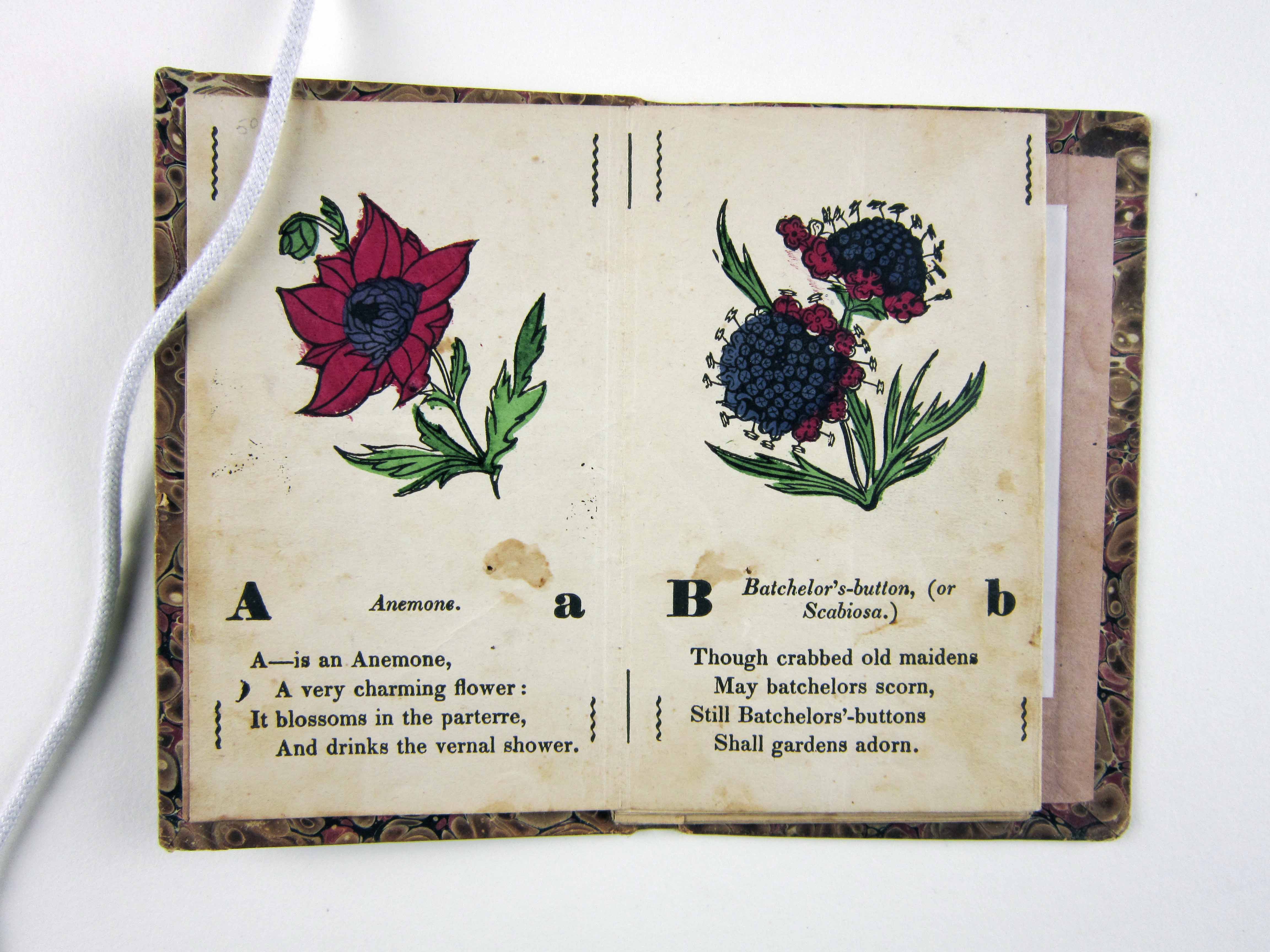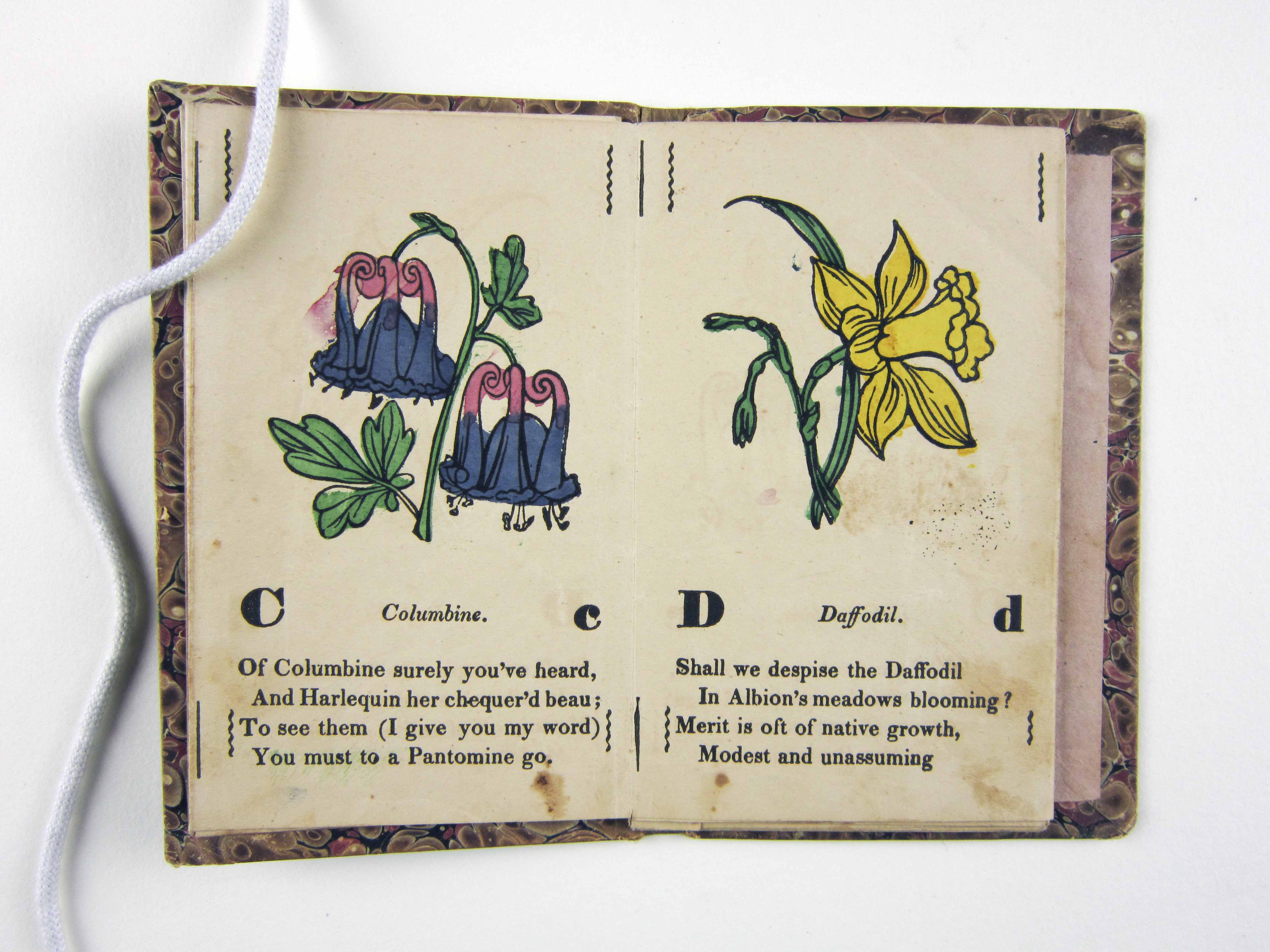

Alphabet books offer a vivid insight into the history of literacy and culture, as well as concepts of childhood. The Children's Book Collection at UCLA contains a rich array of these materials, some well-worn and much-used, some still bright and fresh. Each is a gem of print production and graphical imagery from another time and place. Though the history of alphabet books continues to the present, this exhibit focuses on the works in our collections published between 1700 and 1900, including horn books, primers, works of didacticism and seriousness, whimsy and play.
2. A Jumble ABC
3. A Little Pretty Pocket-Book
4. A New Lottery Book of Birds And Beasts
5. A Pretty Play-Thing for Children of All Denominations
8. ABC of Objects for Home And School
10. ABC with Pictures & Verses
12. Alphabet Et Instruction Pour Les Enfans
16. Dolly's ABC Book
17. Flora's ABC
18. Home ABC
22. Hornbook C. 1700
23. Large Letters for the Little Ones
24. Little ABC Book
25. Little People: An Alphabet
26. Martin's Nursery Battledoor
27. Mother Goose ABC
28. My Darling's ABC
29. Orbis Sensualium Pictus Quadrilinguis
30. People of All Nations: A Useful Toy for Girl Or Boy
31. Picture Alphabet
32. Pretty ABC
33. Railway ABC
34. Rusher's Reading Made Most Easy
38. The Alphabet of Old Friends
40. The Amusing Alphabet for Young Children Beginning To Read
42. The Child's Christian Education
45. The Easter Gift
47. The Favorite Alphabet for the Nursery
49. The Franklin Alphabet And Primer
51. The Golden ABC
55. The Moral And Entertaining Alphabet
57. The Old Testament Alphabet
59. The Picture Alphabet for Little Children
62. The Sunday ABC
63. The Union ABC
64. The Young Child's ABC, Or, First Book
65. Tom Thumb's Alphabet: Picture Baby-Books
67. Warne's Alphabet And Word Book: with Coloured Pictures
68. Wood's Royal Nursery Alphabet
Title Flora's ABC



Brief description 24 hand-colored wood-cut images
Full description This beautiful, tiny, and delicate foldout book illustrates the alphabet with hand-colored wood-cuts of flowers with accompanying verses. This simple book would have been given as a gift to a young girl. The content of the verses is for a female reader, and through the pages expectations of female decorum in the 19th century are reflected.
Literacy This book was not used to teach the fundamentals of the alphabet. The poems within the book contain vocabulary and concepts that would be hard to grasp for an early reader. However, since the book was probably a gift for a young girl who is already literate, the book reinforces the cultural literacy of Western female decorum in the 19th century.
Many of the poems describe the activities and behaviors of upper-class women in the 19th century, such as the letter G: "Geraniums decorate the cot, and flourish in the mansion grand. The noblest female scorneth not to prune them with her ivory hand." The expectations to get married, be unassuming, possess modesty, and know which flowers are good for decorating windows are conveyed throughout the poems in the book.
Childhood The book imagines a female reader who is pure and innocent, reflecting the Romantic ideology of William Wordsworth, an English Romantic poet, who believed "that the mind was at birth a tabula rasa [...] it should be wide open to feelings and sensations, above all those from nature [...] nature would implant the foundations of moral virtue and of beauty."
Several verses give the depicted flowers human characteristics or actions such as the letter W: "Sweet William. Sweet William's a flower so sweet, I think he blooms sweetly whenever we meet." Along with Sweet William other flowers speak of unrequited love, or are praised for being patient and full of merit. The flowers and accompanying verses convey the Romantic childhood ideals of virtue and innocence, specifically in a female context.
Iconography The verses in this female oriented book enable us to see how women were expected to behave in Western society during the 19th century. The value placed upon women getting married is demonstrated with the letter B: "Though crabbed old maidens may bachelors scorn, still Bachelors' Buttons shall gardens adorn."
Women who did not get married were pictured as unflattering and unwanted, as is evident in the use of the words "crabbed" and "scorned." Women were also expected to be quiet and submissive, and this is demonstrated with the letter D: "Shall we despise the Daffodil in Albion's meadows blooming? Merit is oft of native growth, modest and unassuming." The verse uses the Daffodil as a reference to women and how they should possess the same favorable qualities.
Production The date of publication for this book ranges between the years 1838 to 1842. The book was published by Turner & Fisher. Another version of Flora's ABC was published in 1850 by another company by the name Elton & Co. Information regarding the publishing company Turner & Fisher cannot be found. However, Elton & Co. was established in 1840 by John McLoughlin, Sr. and Robert H. Elton. The company was active till 1851, and printed toy books, comic almanacs, and valentines.
Publisher Turner & Fisher
Publication place No. 11 N. Sixth Street, Philadelphia
Date 1838
UCLA Call Number PZ8.3 .F661 1838 CBC
Repository UCLA Charles E. Young Research Library, Dept. of Special Collections
Dimensions 14 cm, Height
Caption